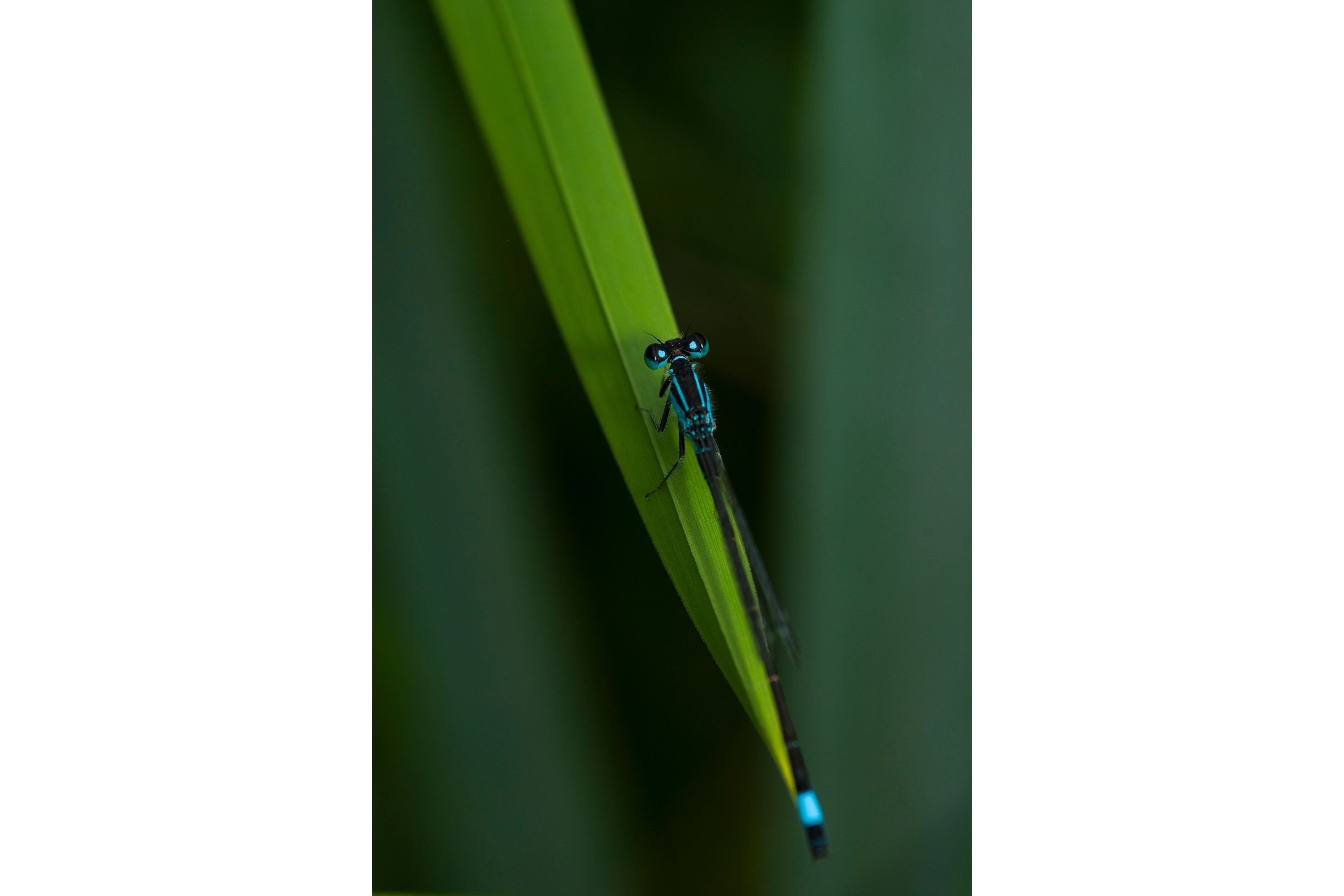Blue ringtail
(Austrolestes annulosus)

Description
The blue ringtail (Austrolestes annulosus) is an Australian damselfly. It is found on most of the continent. The blue ringtail was first described by Edmond de Sélys Longchamps in 1862. The abdomen is 3 cm long. It can easily be confused with Coenagrion lyelli or Caliagrion billinghursti, but can be differentiated through dorsal patterns. They are a thin, medium-sized damselfly with varying coloration, which depends on maturity and temperature. However most are a striking blue with minimal black markings. Females are slightly more robust than males, and have a black and white/pale blue coloration. It is widely distributed in most of Australia, except for the northern and north-eastern parts. It is active through September to April in still water bodies such as riverine pools, lakes and ponds, including temporary pools. Austrolestes is a genus of medium to large-sized damselflies in the family Lestidae. Austrolestes damselflies sit with their wings folded completely back. Males are usually bright blue and black, the females duller. Members of this genus are found in Australia, New Zealand and South Pacific islands. The genus name Austrolestes is derived from the latin word auster meaning south wind, hence south; and the damselfly genus Lestes, which is from the Greek word λῃστής meaning a robber. In 1913, Robin Tillyard described the genus Austrolestes as having characters similar to the very large genus Lestes, which, unlike Austrolestes, sit with their wings outspread.
Taxonomic tree:







